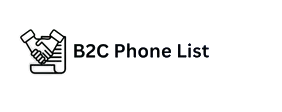Mastering Content Writing Topics for SEO Success
Effective content writing is the cornerstone of any successful digital presence. Creating valuable content is not enough. It must also reach the right audience. Search engine optimization, or SEO, plays a critical role here. SEO ensures your content ranks well. It makes your articles discoverable. Choosing relevant content writing topics is the first step. These topics must resonate with your target readers. They should also align with their search queries. Thorough keyword research informs these choices. Understanding user intent is also vital. High-quality content provides real answers. It solves problems for the reader. This foundational approach builds trust. It establishes your brand as an authority. However, even the best content needs a boost. Strategic linking provides this essential support. Both internal and external links are crucial. They guide users and search engines. These links strengthen your content’s position. They elevate its perceived value. They contribute significantly to its overall SEO performance. A well-planned linking strategy is indispensable.
Elevating Content with External Backlinks for Authority
An External Backlink, often called an outbound link, points from your website to another domain. These links are a sign of credibility. They show you reference authoritative sources. This practice benefits your readers. It offers them deeper insights. They can explore related topics further. Search engines also value this practice. Linking to high-authority sites signals trustworthiness. It tells search engines your content is well-researched. This helps build your own domain authority. Always choose reputable and relevant external sources. Irrelevant links can harm your SEO. They might confuse your audience. Ensure the linked content adds real value. It should complement your article seamlessly. External links enhance the user experience. They provide a richer, more comprehensive view. This careful curation builds confidence. It reinforces your content’s factual basis. Thoughtful use of external backlinks improves SEO. It positions your content as a reliable resource.
Strategic Internal Backlinks: Building Site Structure and Relevance
Internal Backlinks connect different pages within your own website. These links are fundamental for SEO. They help search engine crawlers. They discover new and existing content. Internal linking defines your site’s architecture. It shows the relationship between your pages. This clear structure improves navigation for users. They can easily find related articles. Spreading “link equity” is another key benefit. Strong pages can pass authority. They share it with other important content. This strengthens your overall site. It helps less authoritative pages rank higher. Keyword-rich anchor text is essential here. Use descriptive text for your links. It tells users and search engines what the linked page is about. Avoid generic phrases like “click here.” Instead, use phrases related to the target page’s content. Think about topic clusters. These are groups of related articles. Internal links tie these clusters together. They establish your authority on specific subjects. A robust internal linking strategy guides visitors. It keeps them engaged on your site longer. This signals relevance to search engines.
Integrating Linking Strategies into Your Content Writing Workflow
Implementing effective linking should be part of your content creation process. It is not an afterthought. Begin by identifying key terms for internal linking. These terms should lead to supporting content. Consider user journey paths. Where might a reader want more information? Plan your internal links as you outline your article. For external backlinks, always verify sources. Ensure they are current and highly reputable. Think about how the external link enhances your current point. Do not force links where they do not fit naturally. The goal is always to provide value. Both types of links should feel organic. They should seamlessly integrate into your narrative. Review existing content for linking opportunities. Update old articles with new internal and external links. This boosts their SEO potential. It keeps your content fresh and relevant. Regularly audit your links. Fix any broken links promptly. Broken links harm user experience. They also negatively impact your SEO. Consistency in this practice yields long-term benefits.
The Unified Power of Backlinks for Enhanced Content Performance
The synergy of external and internal backlinks is powerful. It creates a robust network of information. This network benefits both readers and search engines. External links validate your research. They build your authority through association. Internal links strengthen your site’s structure. They enhance discoverability and user flow. Together, they tell a compelling story. They signal your content’s comprehensive nature. Implementing these linking strategies is an ongoing effort. It requires attention to detail. It demands a deep understanding of your audience. Focus on providing maximum value. This commitment ensures your content stands out. It helps it achieve top search engine rankings. Leverage these linking techniques. Elevate your content writing to new heights.
